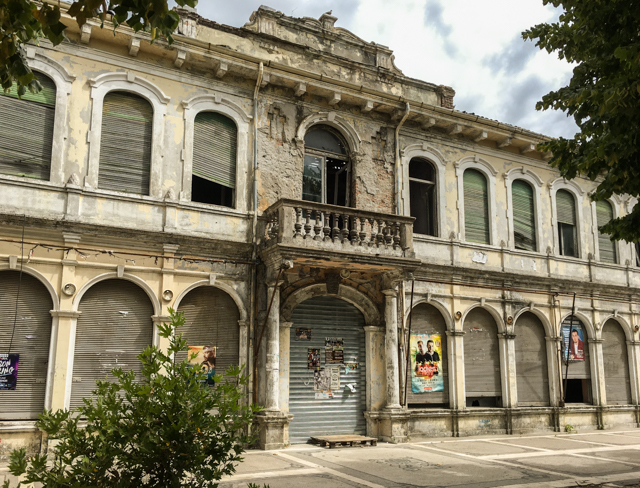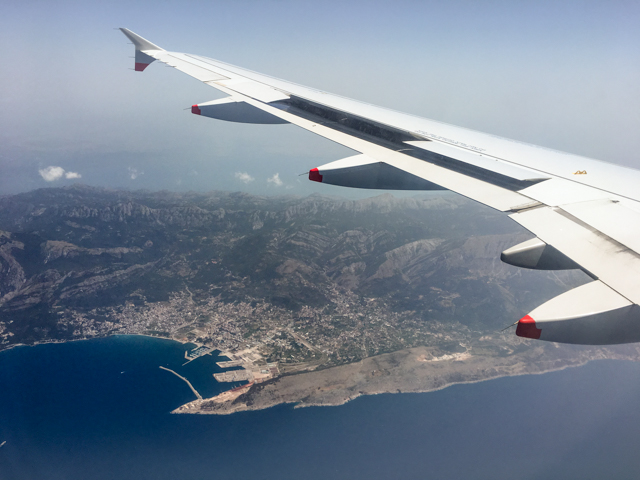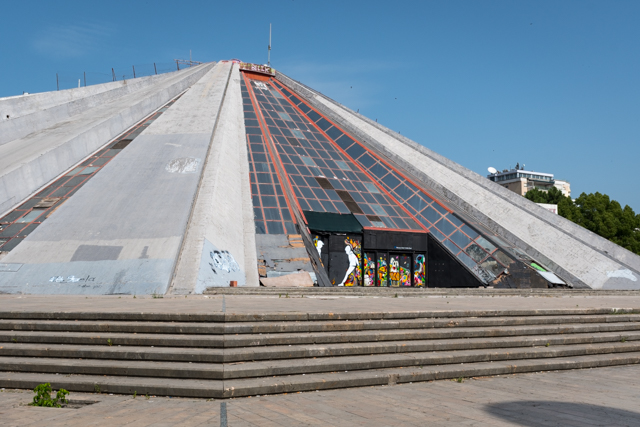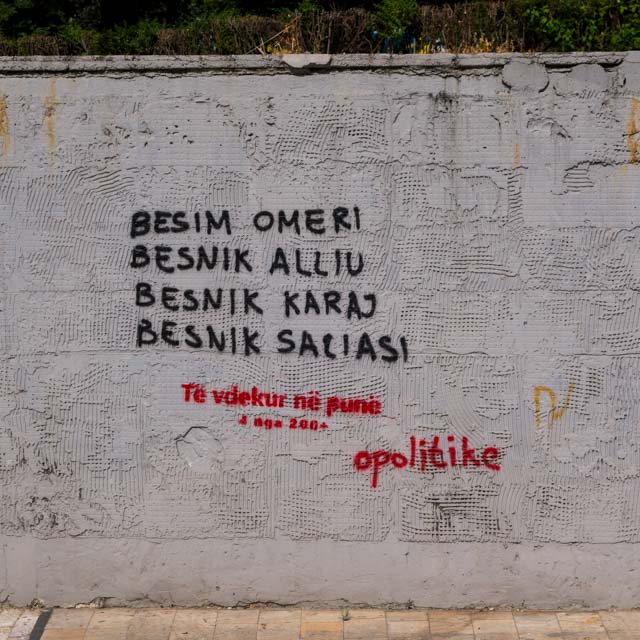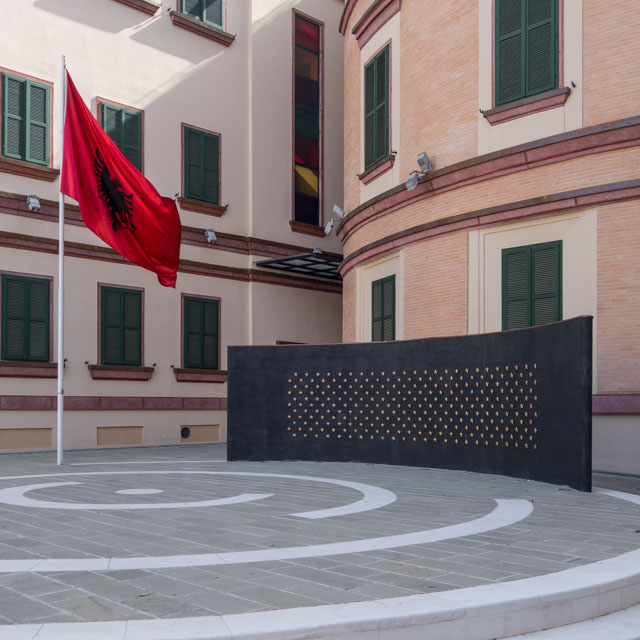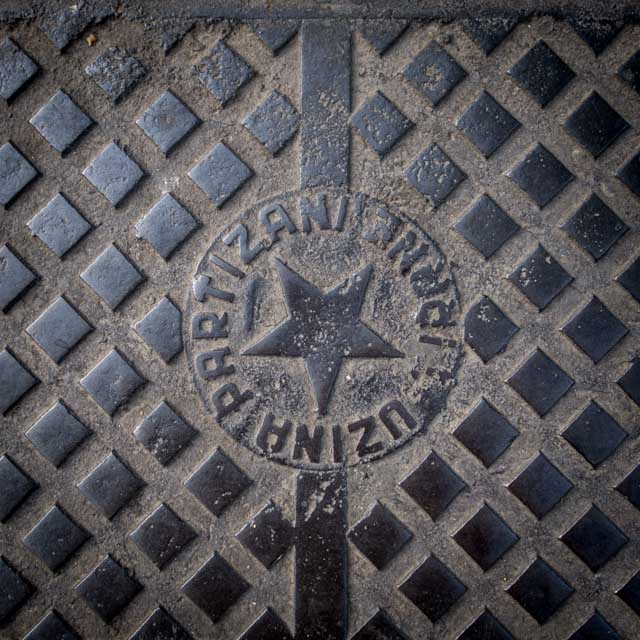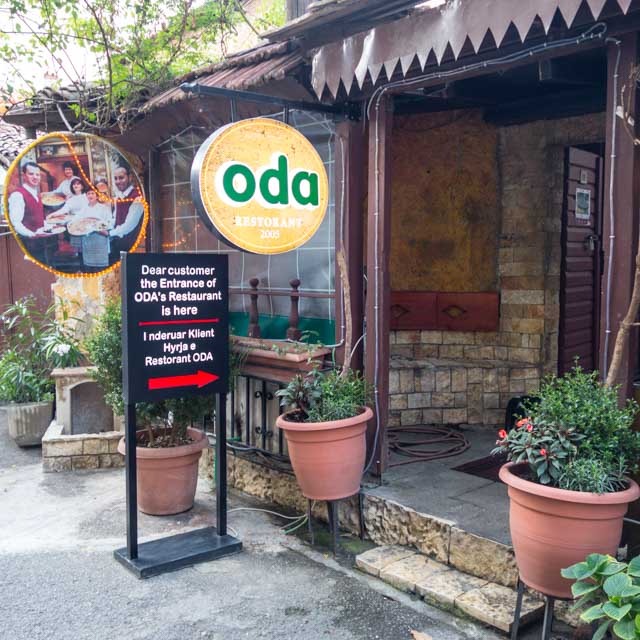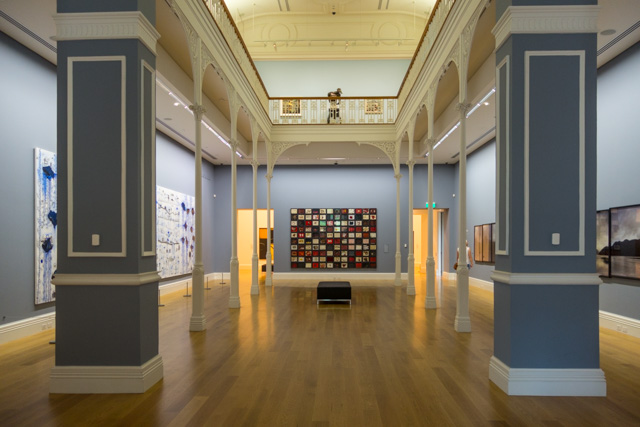















Our alarm over the last three days has been set to 9:30, 7:30 and today 5:30 – not a good trend!
It would have been good to have a bit more time to explore Shkodër and our lovely old hotel but it’s not to be. We need to leave at 6:30 to meet a ferry, which only goes once a day. The hotel provided us with packed breakfasts and staff were on hand at 6:15 to provide coffee. Macchiato is the flat white of Albania – it’s available everywhere and is generally good. This morning’s was no exception. It seemed like most of the hotel’s guests were leaving at the same time as us to catch the same ferry. There is a standard circuit in Albania that lots of tour groups do and this is definitely part of it.
We’re soon out of the city and climbing into the surrounding hills, the road winds around the valleys with long drops on one side or the other. At one point we can see a few miles ahead and there is a strung out convoy of minibuses heading the same way as us. We turned off the ‘main’ road and on to a smaller unmade road –the signpost pointed towards a small town – we’re going to Puke! Despite its size the town seems to have a large budget for regeneration, all of the centre is being rebuilt, repaved or renovated. The road surface improves too as we head onwards into the hills.
There are lots of hydroelectric schemes in the area so many of the lakes are higher than you would expect. We stopped at a viewpoint to look at one, the surface is mirror smooth, the mountains still towering over us are reflected in its surface, it’s quite rugged and austere but still beautiful. After about 30 minutes more, the road plunges into a tunnel through a hillside, as the light appears at the end of the tunnel there appears to be a traffic jam, this turns out to be a car park! There is so little space on the dock that once a minibus has unloaded its passengers it goes back into the tunnel where one lane is used for parking until the return ferry later in the day. As we board we come across some people we shared a table with on our first night on Tirana, again confirming this a part of the tourist circuit.
The ferry crosses Lake Koman, which is really a flooded valley, and feels much more like a river. The journey takes about 3 hours. For most of that we are in a steep valley of grey rocks with sparse vegetation, the tops of the highest mountains are in the clouds, small patches of snow remain around the peaks. 28 years ago, I travelled around the north of the Balkans, then Yugoslavia, this scenery is very similar – the mountains provide a backbone to the whole region.
Towards the end of the journey, there are a few signs of habitation – loose clusters of farmhouses and occasional chapels on the hillsides. There’s a small ferry, which appears to criss-cross the river linking these remote communities together. We spot an old man walking back to his boat with two large bags of vegetables.
The jetty at the end is a large flat area of gravel; there is a group of minibuses and drivers waiting for us. Our ride is organised already so we don’t need to haggle with this crowd. The driver treats us to some loud Balkan pop music. It seems to have influences from Europop, the Balkans and further East. Shazzam is able to identify most of the tracks and offer us a purchase on iTunes, should we wish to recreate the experience – which we do!
The drive takes us further into the hills into Valbona Valley, an area known for its natural beauty. We follow a river, which runs down the valley over rocks and small waterfalls. It’s a beautiful turquoise blue colour, which is set off by the pale limestone.
Our hotel is on the edge of a small village. It feels very rural and homely. The valley sides tower above us. We have a little while to settle in then lunch is served – it’s all vegetarian, mostly produced in the fields outside. The highlight is the green salad – no really it’s the baked sheep’s cheese, lovely with chunks of bread dunked in it.
After lunch we had a leisurely few hours to relax, read, make a start on the blog, etc. At 5:00, we joined Adonis, a local villager, for a walk around the immediate surroundings of the hotel. We saw the oldest building in the village; it looked like it had been there for hundreds of years, and an old water mill. We continued to James Lake, created by a villager who died five years ago, he dammed a small area, redirected a spring to fill it and filled it with fish. Unfortunately since his death, Albanian tourists from the cities have littered it, taken all the fish and left it looking quite sorry for itself.
Dinner was another hefty feast of local dishes, we had a glass of local red wine with it – probably a mistake, they came out of a 5l flagon. At least they were cheap.








